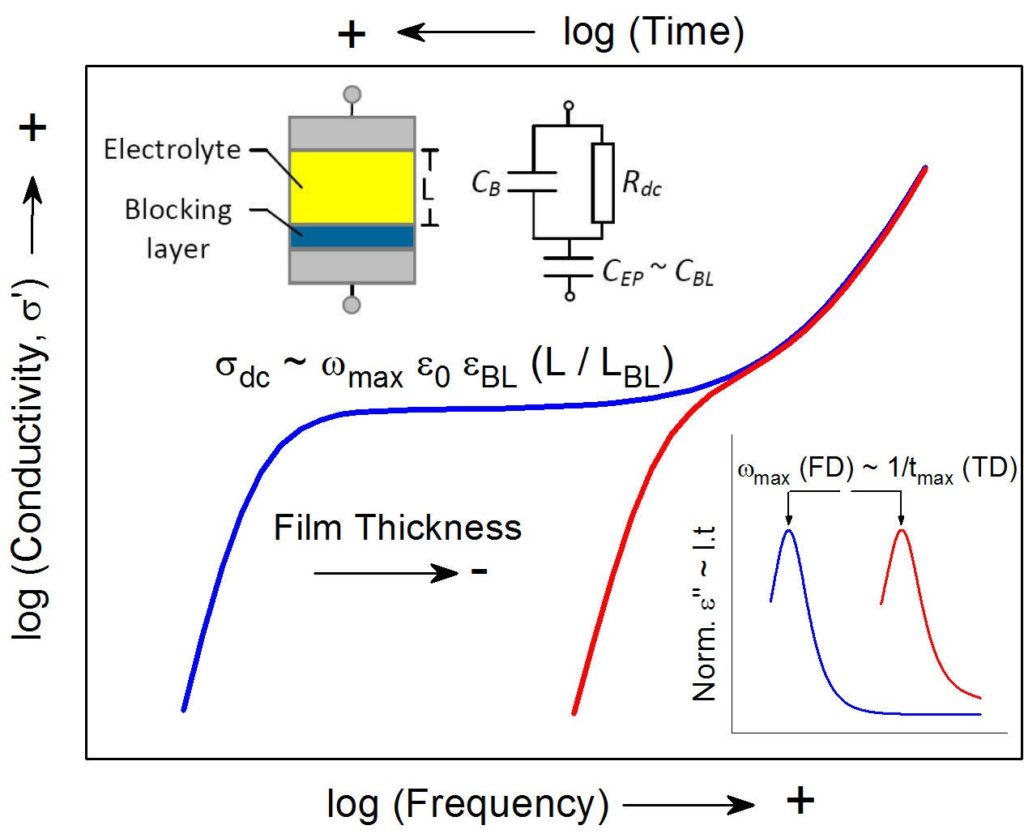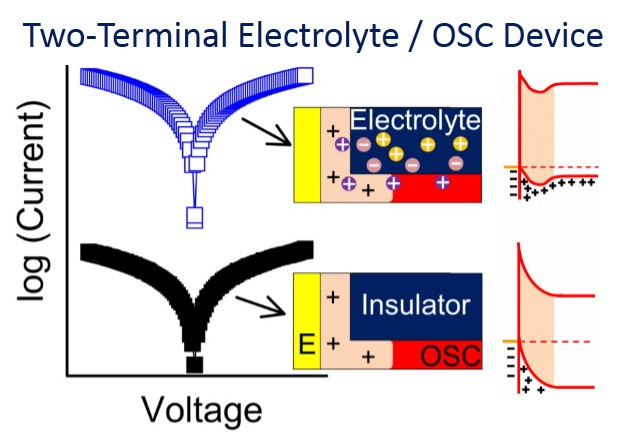Metal-organic semiconductor-electrolyte systems and devices
(Contact person: P. Normand)
These activities are conducted in close collaboration with the Hellenic Mediterranean University and the INN project “Materials for Nanolithography and Organic Electronics”. They are devoted to Metal/Organic Semiconductor /Electrolyte systems and associated devices for applications ranging from sensing (e.g., radiation detection, characterization of ionic chemical species) to low-cost logic circuits and memories. Since the demonstration of organic proton memories (2008) using polymer blend electrolytic systems consisting of PMMA matrices doped with poly-oxometalate molecules, and radiation sensors (2013) based on triphenylsulfonium nonaflate (TPSNF) photoacid generator (PAG)-containing PMMA films, we have devoted most of our efforts to the study of ion transport and polarization mechanisms. In 2015, we have proposed a method for extracting the dc conductivity (σdc) of ionic materials from frequency- and time-domain dielectric spectroscopy. The method is independent on the specimen thickness and is of particular interest for examining the possible dependence of σdc on film scaling.

Over the past few years we have been working on electrolyte-gated organic thin film transistors (EGOTFTs), with a particular focus on identifying and understanding the physico-chemical processes taking place at the interfaces and in the bulk, including how and to what extent they affect the operation of the devices. Over the course of this research, we unexpectedly observed (2019) an increase of up to three orders of magnitude in the electrical conductivity of P3HT films deposited onto two coplanar electrodes and covered with electrolyte materials. Further analysis revealed that this phenomenon derives from synergistic effects between the metal/P3HT interface energetics, charge transport in the P3HT and electrolyte ionic conductivity. Together with the potential of the investigated two-electrode devices for sensing applications, this study provides new insights into the development of electrolyte-gated transistors and can serve as a generic method for the extraction of physical quantities like the space-charge width of metal/OSC junctions. Output-current modulation of EGOTFTs is currently examined as a function of various parameters, like the polymer-electrolyte baking temperature and the thickness of the OSC layer, for getting more insight into the effect of ion mobility on device operation and the issue of whether electrochemical doping occurs in the bulk of the OSC.
